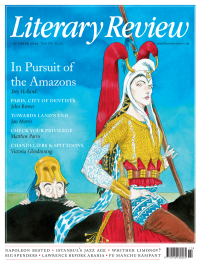John Brewer
Grin City
The Smile Revolution in Eighteenth Century Paris
By Colin Jones
Oxford University Press 231pp £22.99
Colin Jones’s The Smile Revolution in Eighteenth Century Paris is a marvellous, engaging and constantly enlightening study, one that is sure to make you purse your lips with pleasure. To judge from the accessible and illuminating mixture of medical, cultural and political history, my Beverly Hills dentist, an Armenian-American with impeccable teeth, a broad smile, ineffable charm and the latest (and least painful) technologies, would have been quite at home in ancien régime Paris. Jones’s book is about teeth and smiles, bodies and culture. In his deftly woven narrative, it becomes clear that the triumphs of late-18th-century French dentistry – professionalisation, a commitment to canine conservation and oral hygiene, skill in making and installing artificial dentures – were a crucial element in the complex process he calls the ‘Smile Revolution’. Only when an open mouth was able to expose white teeth (or, failing that, white dentures), only when dental hygiene dispelled the miasma of halitosis, could a full smile exposing the teeth be countenanced.
And why does a smile, that most evanescent of expressions, matter? Because, rather like the grin of Lewis Carroll’s Cheshire Cat, the smile is part of something larger. For Jones, smiles are vital signs, mixing nature and culture. The history of the Parisian smile, he maintains, involves ‘surgical and scientific

Sign Up to our newsletter
Receive free articles, highlights from the archive, news, details of prizes, and much more.@Lit_Review
Follow Literary Review on Twitter
Twitter Feed
Literary Review is seeking an editorial intern.
Though Jean-Michel Basquiat was a sensation in his lifetime, it was thirty years after his death that one of his pieces fetched a record price of $110.5 million.
Stephen Smith explores the artist's starry afterlife.
Stephen Smith - Paint Fast, Die Young
Stephen Smith: Paint Fast, Die Young - Jean-Michel Basquiat: The Making of an Icon by Doug Woodham
literaryreview.co.uk
15th-century news transmission was a slow business, reliant on horses and ships. As the centuries passed, though, mass newspapers and faster transport sped things up.
John Adamson examines how this evolution changed Europe.
John Adamson - Hold the Front Page
John Adamson: Hold the Front Page - The Great Exchange: Making the News in Early Modern Europe by Joad Raymond Wren
literaryreview.co.uk